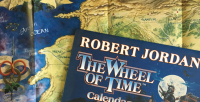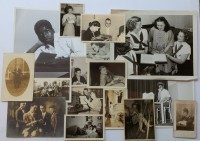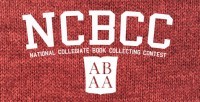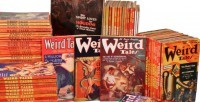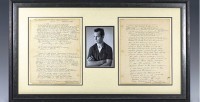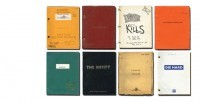Robert Jordan was the best-selling author of The Wheel of Time fantasy series, and (because I need to get my utter impartiality out of the way at the start) one of my favorite authors. I've collected his books for the past 25 years. If you're unfamiliar with The Wheel of Time, think of it as a 14-volume The Lord of the Rings set at a future point in Earth's history when society has regressed technologically and forgotten most of our history -- but discovered magic, naturally! Total sales for the series are estimated to be in excess of 80 million copies, although those figures are several years old and at least one of his publishers has suggested the estimate is on the low side. With a readership of that magnitude, it seems likely there are many people collecting Jordan's books and related items, so we have assembled this guide to the major works and significant associated items. Jordan's real name was James Oliver Rigney, Jr., a Vietnam veteran who later worked for the US Navy as a nuclear physicist. Rigney began writing for his own amusement in 1977, and published under several pseudonyms in the 1980s. The first book of The Wheel of Time (WoT) series, The Eye of the World, was published in 1990, and sold well. By 1993, when the fifth installment, The Fires of Heaven came out, WoT books were huge bestsellers. Rigney was diagnosed with amyloidosis in 2006, and died in September 2007 after undergoing extensive medical treatment at the Mayo Clinic. After his death, one of my sem... [more Collecting Robert Jordan’s Wheel of Time]
On Collecting Books
We asked the winners of the 2021 National Collegiate Book Collecting Contest to introduce themselves, and learned about some fascinating books and collections along the way! First place: Jessica Camille Jordan (Stanford University): Could you give us a brief description of your collection? My collection is comprised of works that bear the illustrative or graphic design work of husband/wife duo Leo and Diane Dillon, whose career together spanned six decades. Most of the objects in my collection are books, but there are also comics, records, posters, and more. The earliest items I have are science fiction pulp magazines from the 1950s, and the most recent is a 2019 picture book called Love and the Rocking Chair, an autobiographical story they were working on at the time of Leo's death in 2012, and which Diane later completed. What first interested you in Leo & Diane Dillon? Although I didn't know it at the time, their artwork graced some of my favorite books as a young reader, including Wise Child by Monica Furlong and Sabriel by Garth Nix. Later on, I learned more about their fascinating lives and career, and I felt it was important to try and create a comprehensive bibliography of their work. But I have always been really drawn to and moved by the beauty of their art, and that's where the initial interest came from. What currently has pride of place in your collection? Probably the Reader's Digest Condensed Books installment that contains their illustrations for a condensed v... [more Meet the 2021 NCBCC Winners]
We are pleased to announce that for the fourth year the Northern and Southern California chapters of the ABAA will be jointly awarding a prize for the best young book collectors in California. As with prior years, three prizes will be awarded, and the top collection will be exhibited at the upcoming 52nd California International Antiquarian Book Fair to be held in Oakland this coming February. Submissions are due December 1, 2021 and winners will be notified by December 20, 2021. Complete details are found here. [more Announcing The Fourth Annual California Young Book Collector’s Prize]
The ABAA is proud to announce the winners of the 2021 National Collegiate Book Collecting Contest. First: Jessica Camille Jordan (Stanford University) for "Six Decades of Leo and Diane Dillon." Second: Read W. Brown (New York University) for "The Serious Business of Fun: A Collection of Books on the Video Game Industry." Third: Shannon D. Bohle (Johns Hopkins) for "Life through Space and Time: A Personal Journey through Modern Science, Collecting Hand-signed Autographs, Manuscripts, and First Editions." Essay Award Joseph E. Hiller (Duke University) for his essay "Como un detective salvaje: Gathering Small Press, Experimental, and Untranslated Latin American Literature." The National Collegiate Book Collecting Contest is jointly administered by the Antiquarian Booksellers' Association of America (ABAA), the Fellowship of American Bibliophilic Societies (FABS), the Grolier Club, and the Center for the Book and the Rare Books and Special Collections Division (the Library of Congress) Congratulations to all the winners of the 2021 National Collegiate Book Collecting Competition! [more 2021 NCBCC Winners]
The 2021 National Collegiate Book Collecting Contest is now accepting entries! Established in 2005 by Fine Books & Collections Magazine to recognize outstanding book collecting efforts by college and university students, the contest is now sponsored by The Antiquarian Booksellers' Association of America (ABAA), the Fellowship of American Bibliophilic Societies (FABS), the Grolier Club, and the Center for the Book and the Rare Books and Special Collections Division of the Library of Congress. The contest aims to encourage young collectors to become accomplished bibliophiles. Book-collecting competitions are held at more than three dozen colleges and universities across the United States, and some of these contests have been conducted for many decades, dating back to Swarthmore College's first competition in the 1920s. All college or university prizewinners are encouraged to enter. Student collectors whose institutions do not offer a book collecting contest may also enter. The contest rules can be viewed here... Applications may be submitted here, and all entries for the 2021 competition must be submitted by June 15, 2021. The Antiquarian Booksellers' Association of America promotes ethical standards and professionalism in the antiquarian book trade, encourages the collecting and preservation of rare books, and supports education and research. The Fellowship of American Bibliographic Societies was formed in 1993 as a national organization of member book collecting groups. The C... [more National Collegiate Book Collecting Contest 2021]
The Antiquarian Booksellers' Benevolent Fund Since its founding in 1952 by a group of ABAA members, the Antiquarian Booksellers' Benevolent Fund has been dedicated throughout its history to providing timely financial assistance to those in the book trade who find themselves in a time of need. Originally known as The Charles Grand Memorial Fund (a founder's reminiscence can be found below), it was specifically meant to provide “for the assistance of needy persons, regardless of affiliation, who are or have been engaged in the business of selling and dealing in books, manuscripts, and printed matter in general,” with the only proviso being that funds may be granted only for personal needs, not for business needs. In a typical year, the Fund gives a total of $40,000 in one-time disbursements to booksellers in need, the majority of whom are not members of the ABAA. Historically, the Fund has been sustained by donations from ABAA members, their generosity born out of their understanding of how precarious a livelihood in the book trade can sometimes be. Most antiquarian booksellers are individual proprietors with limited capital, and are especially vulnerable to unanticipated ill-health, accidents, natural disasters or other types of misfortune. The Antiquarian Booksellers' Benevolent Fund is administered by a group of Trustees comprised of the three most recent Presidents of the ABAA. The ABAA regards its stewardship of the Benevolent Fund as one of its most important responsi... [more Donate to the Benevolent and Woodburn Funds]
Rare books and ephemera can be a fascinating avenue to examine the past and understand what was really happening during significant events or time periods. We took a deep dive into the database to see what light our members offerings could shine on America's new favorite drama... The Queen's Gambit Netflix's #1 new show is the coming-of-age story of a female chess prodigy struggling with addiction and the chauvinism inherent in 1960's American society. Based on Walter Tevis's 1983 novel of the same name, the show is being talked about for many reasons, not the least of which is the way it revels in decidedly analog pleasures -- the slow, methodical game of chess itself and the fashions of the 1960s -- and a very retro style of editing at odds with the frantic pace of modern television. At the same time, its vision of glass ceilings shattering and the importance of a team of like-minded friends to support each other speaks directly to issues very much on our minds at the current moment. Chess lovers have noted the accuracy and care with which the chess games themselves are depicted, which is no surprise considering the show recruited Grand Master Garry Kasparov and noted chess instructor Bruce Pandolfini (who also helped proof-read the original novel!) to oversee the gameplay and coach the actors on the nuances of competitive chess. In this time of social isolation, games like chess are discovering new fans and inspiring older ones to return to the board (the so-called "pandem... [more Behind The Queen’s Gambit]
HBO's latest hit show, "Lovecraft Country" is based on Matt Ruff's 2016 novel of the same name which mines the horror and mythology of H.P. Lovecraft, but instead of hiding his racist views, highlights them by having a group of African Americans from Chicago encounter both racists and supernatural forces in Lovecraft's New England during the Jim Crow period. H.P. Lovecraft has long been praised as a visionary and trailblazer for American fantasy; and is regarded as "second only to Edgar Allan Poe in the annals of American supernatural literature" by critic Michael Dirda. A prolific writer, Lovecraft was nevertheless unable to make a significant income from his fiction during his life. His reputation and influence only increased after his death, and there are now many collectors of his work, both serious and casual. Most of his stories were published in pulp magazines during his life, which can present challenges for collectors who wish to own copies of the magazines in which various stories made their first appearance. His work has been widely collected and anthologized in recent decades. After his death, his friends and fellow horrow writers August Derleth and Donald Wandrei attempted to interest major publishers in a collection of his best work, but found traditional publishers had little interest in occult horror. They formed a publishing company, Arkham House, specifically to reprint Lovecraft's stories, and over the decades published much of Lovecraft's fiction, as well ... [more Exploring Lovecraft Country]
Every so often an ABAA member lists an item that gets people in the business talking, regardless of whether it fits with their own particular interests or specialities. One of those items is this exceptional letter from Jack Kerouac to a young boy tasked with writing to a published author for a school project. The response is generous, eloquent, and expansive, offering more of a window into the author than the typical high-school project might reasonably be expected to produce! Jack Kerouac Autographed Manuscript by Jack Kerouac Description: 1964. Jack Kerouac's candid handwritten reply to a young man's questions about being a "Beatnik," his life philosophy, his thoughts on Montana, and more. Students in Robert Dodd's ninth-grade class were given an assignment to contact their favorite writer with their own unique series of questions relating specifically to that writer. The young Dodd chose Jack Kerouac, and the author replied at length to his questionnaire, which includes queries about his classification as a "Beatnik" (his answer: "I never was a Beatnik - it was the newspapers and critics who tagged that label on me...."), life philosophy ("My philosophy is 'No Philosophy,' just 'Things-As-They-Are'"), career goals ("Be a great writer making everybody believe in Heaven"), the ideal way of life ("Hermit in the woods..."), his thoughts on fame ("My name is like Crackerjacks, famous, but very few people buy my books..."), and segregation ("he Irish and Italians of Massachuset... [more Jack Kerouac in His Own Hand]
Note: We're reposting this article on collecting film scripts in light of the growing difficulty in acquiring copies of classic mid-century films and movie studio's reluctance to make classics available for exhibition. It was originally published in August 2019. According to a great many people, the film (or movie, if you prefer) was the great art form of the 20th century, so it shouldn't be any great surprise that there is a large number of collectors — individual and institutional — focused on the movie business; but it might surprise many to learn that there's great interest in collecting the seemingly least-glamorous part of the entire filmmaking process — the scripts themselves. Collecting scripts is different from collecting many other forms of printed matter, as scripts were not mass-produced (excepting the relatively recent trade-paperback editions of hit films) or made available for sale to the general public. Scripts were typed out and mimeographed; changes were printed on different colored pages and the earlier pages thrown away; scripts went through innumerable drafts, and sometimes several sets of writers; and all that before the production technicians and artists got hold of the "finished" script and began annotating it for their own purposes. There are therefore multiple different types of script and an entire language of shorthand to decipher when evaluating a script manuscript. Different eras and areas of production had their own conventions and practic... [more Collecting Film Scripts]


